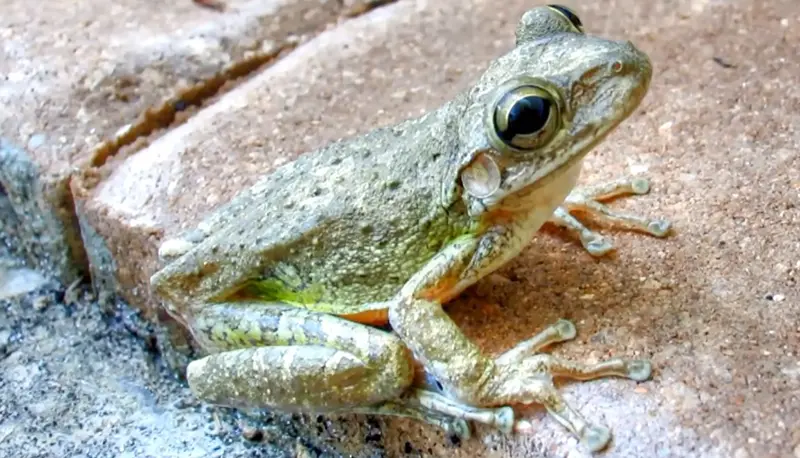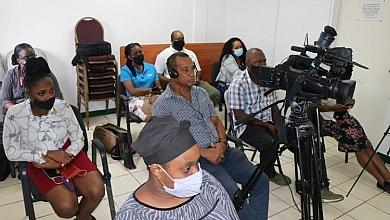
The Forestry, Wildlife and Parks Division has reported a significant increase in the population of Cuban Tree Frogs on the island. Forestry Officer Jeanelle Brisbane made this announcement on Q95FM on Thursday. The Cuban Tree Frog, which first appeared in Dominica in 2018, has become heavily populated, particularly in the Portsmouth area where it was initially discovered.
Jeanelle Brisbane revealed that the frogs entered Dominica through the seaport in Portsmouth. She emphasized the toxic nature of the Cuban Tree Frog’s mucus, advising the public to wash any surface or clothing that comes into contact with the frog to prevent adverse reactions.
Stephen Durand, a former Forest Officer with Dominica’s Forestry, Wildlife & Parks Division, provided further insights into introducing the Cuban Tree Frog. He stated that the frogs were inadvertently released from containers brought in to construct the Cabrits Resort & Spa Kempinski in Portsmouth. These containers containing planting materials and other construction supplies were opened on-site, allowing the frogs to escape.
Durand also highlighted the initial response to the frog sightings. He mentioned that forestry officials, including Brisbane, visited the site to confirm the presence of the frogs and strategized a campaign to eradicate the small population. However, despite these efforts, the frogs have continued to spread and multiply over the past six years.
The Cuban Tree Frogs were reportedly introduced twice into the Portsmouth area, once with hurricane relief materials following Hurricane Maria in 2018, and again in 2019 with containers of plants brought in for landscaping the resort. This has led to the current widespread presence of the species on the island.
Brisbane noted that the frogs’ mucus can cause reactions ranging from mild irritation to severe allergic responses, including burning skin, rashes, burning eyes, sneezing, and asthma attacks. She advised that any contact with the frogs should be followed by thorough washing of the affected area.
The Forestry Division is working on strategies to control the spread of the Cuban Tree Frog and mitigate its impact on local biodiversity. Public education and vigilance are key components of this effort, and the Division urges the public to report any sightings of the frogs to help manage their spread.
This article is copyright © 2024 DOM767





